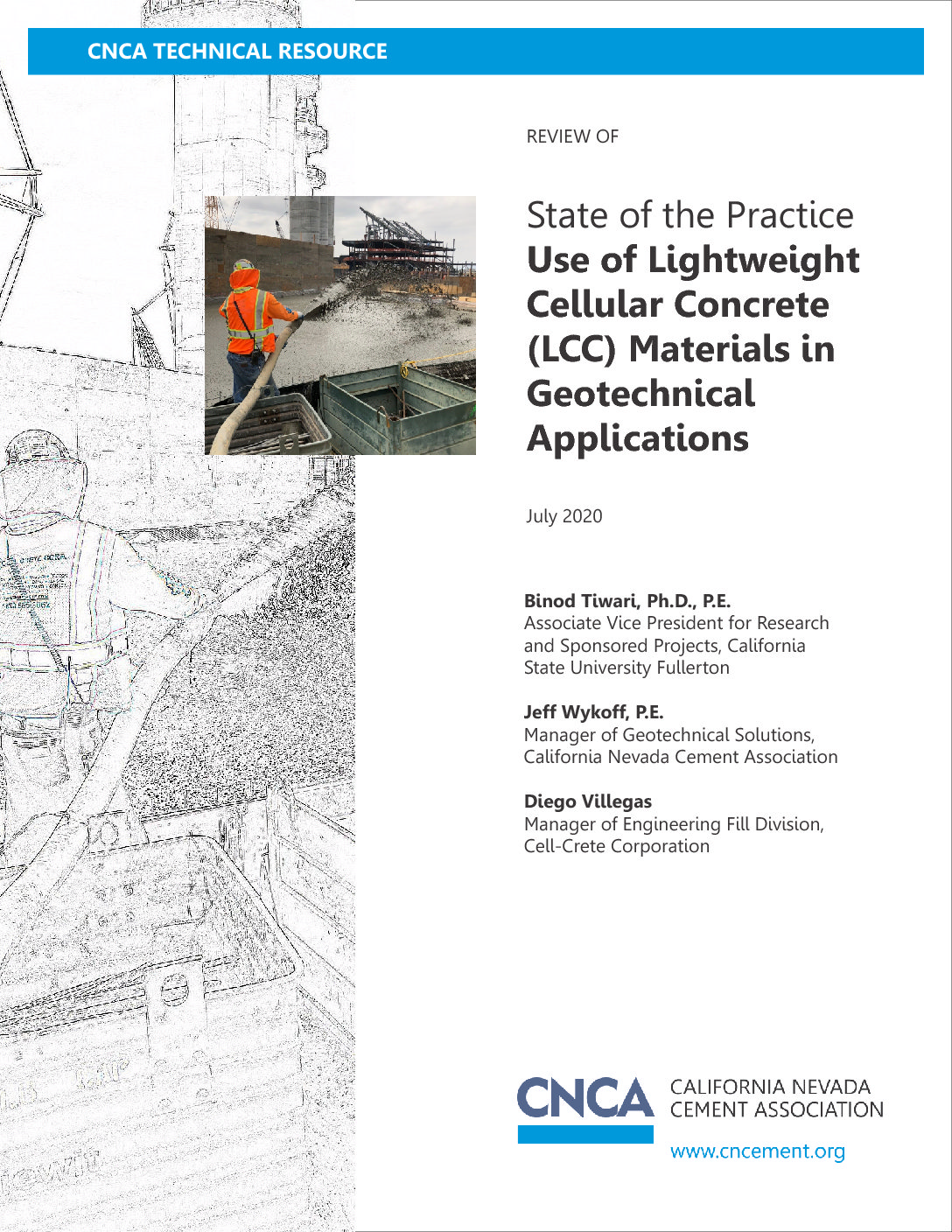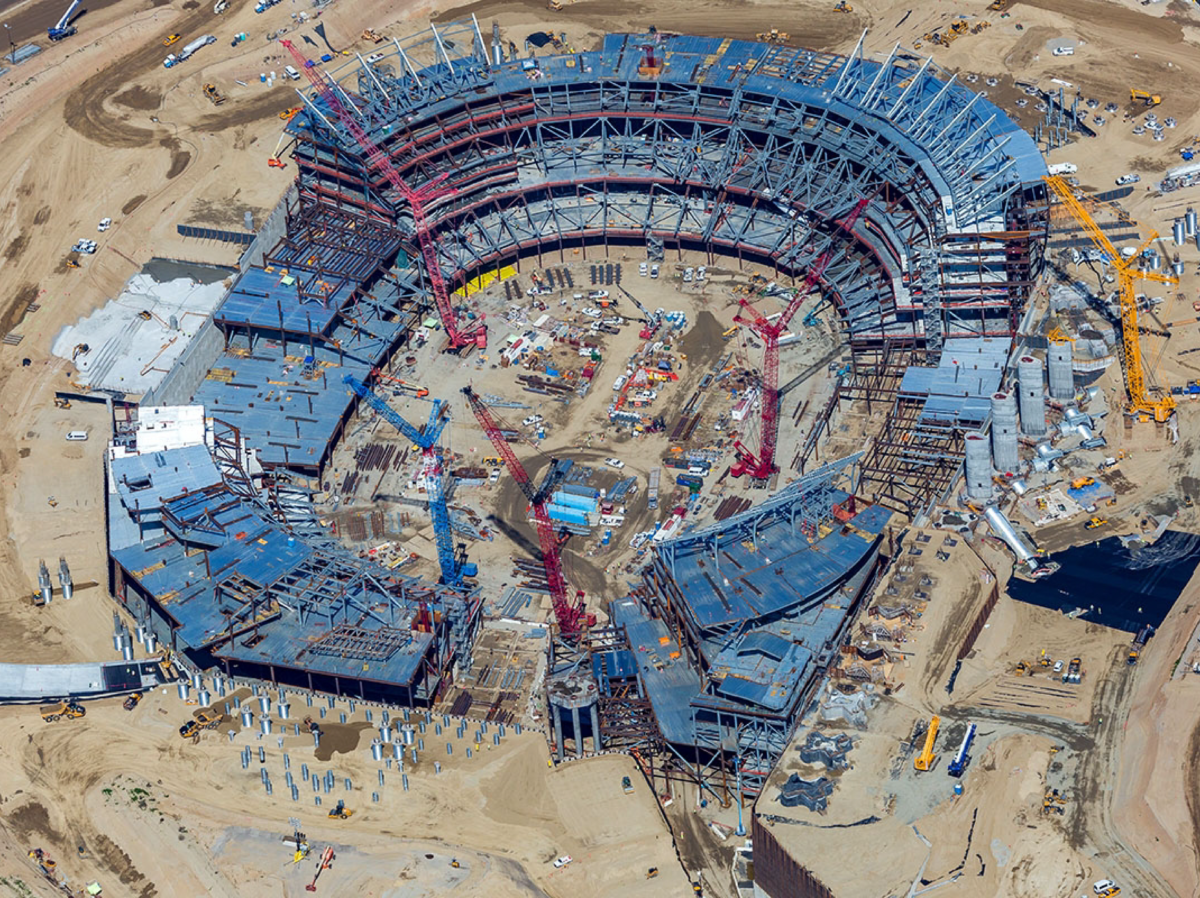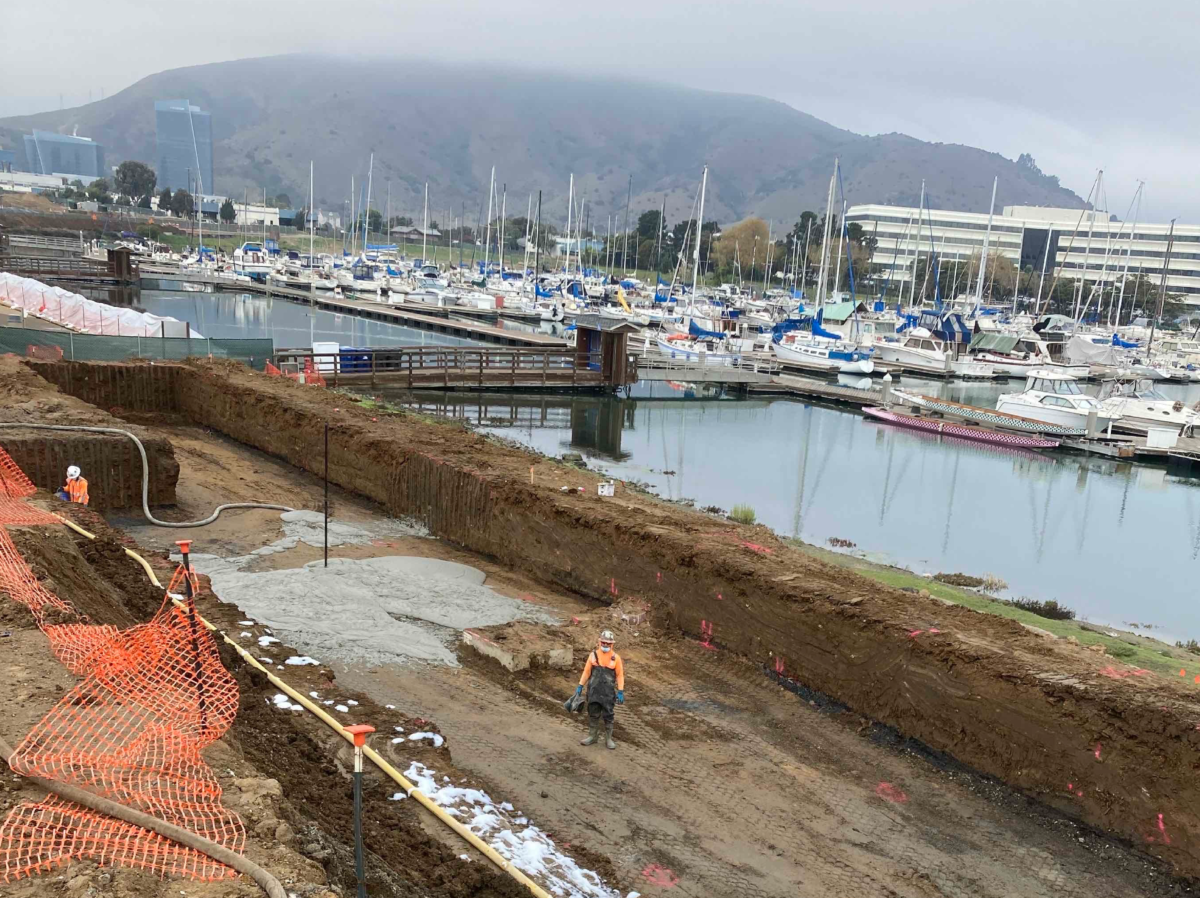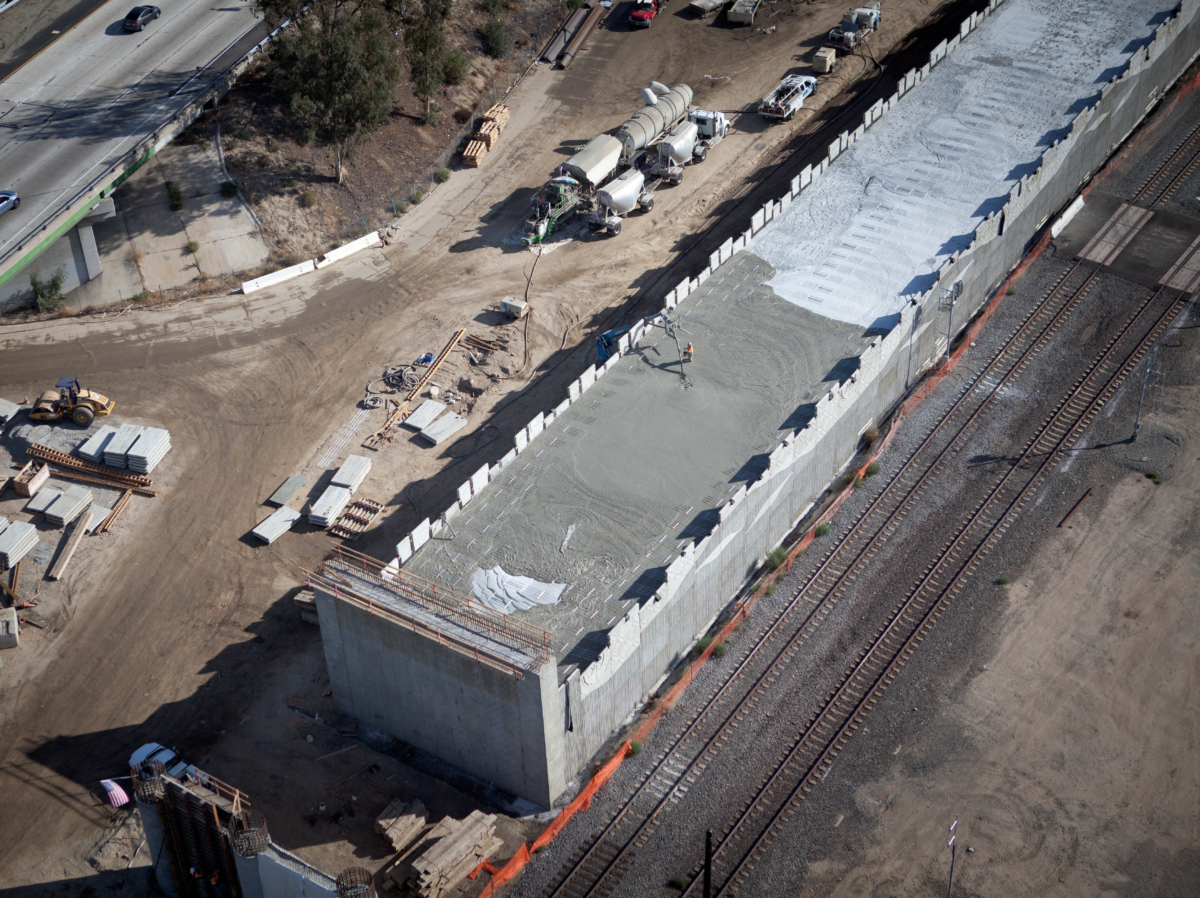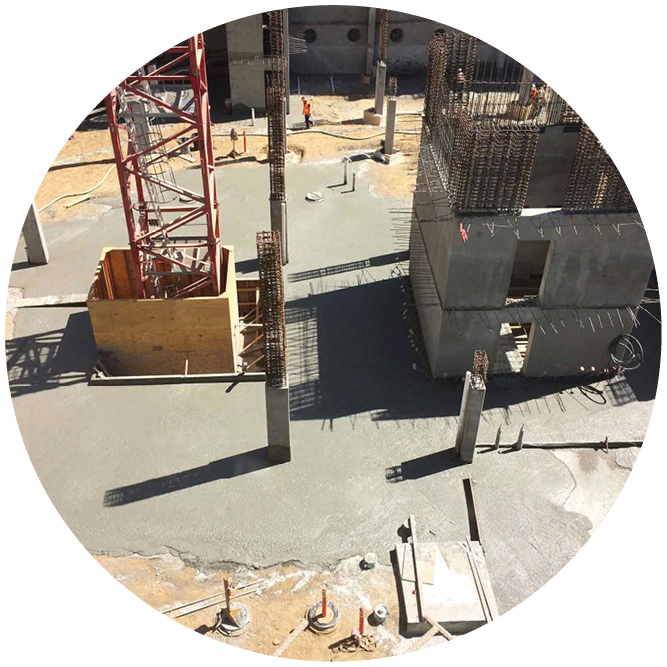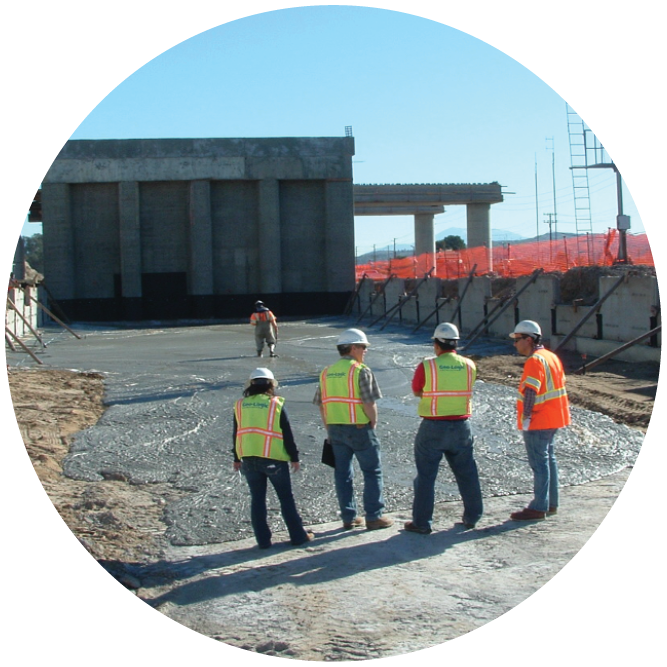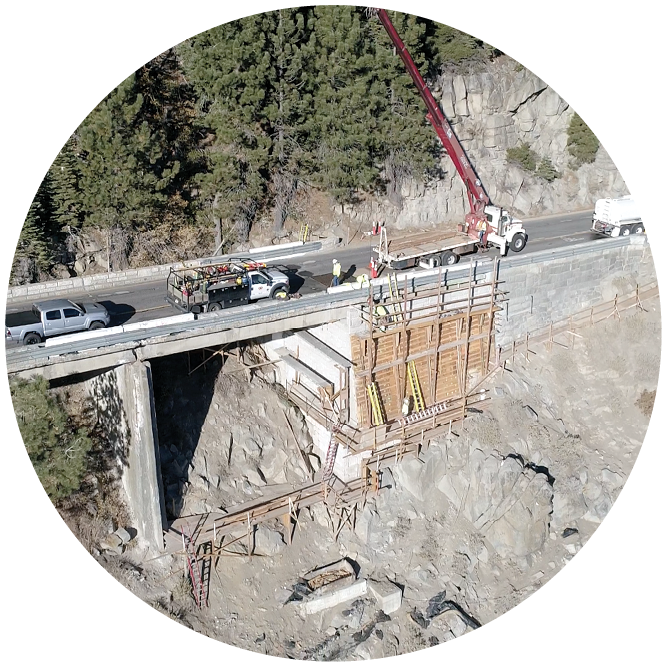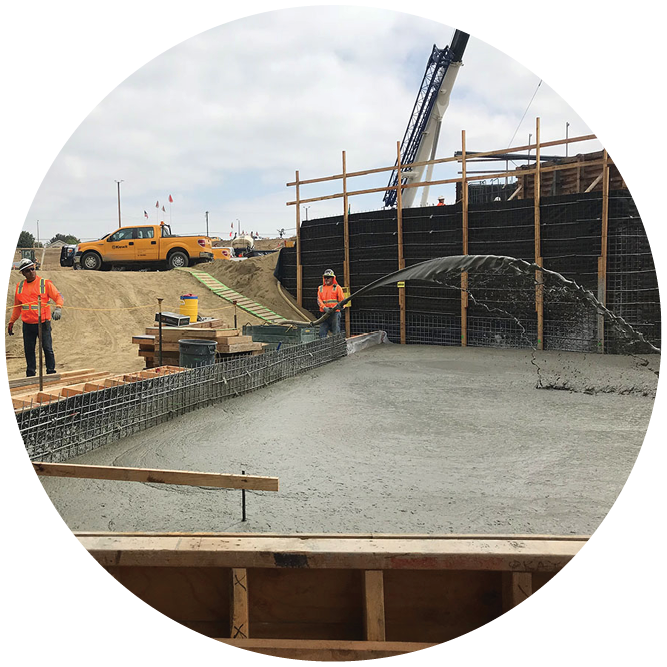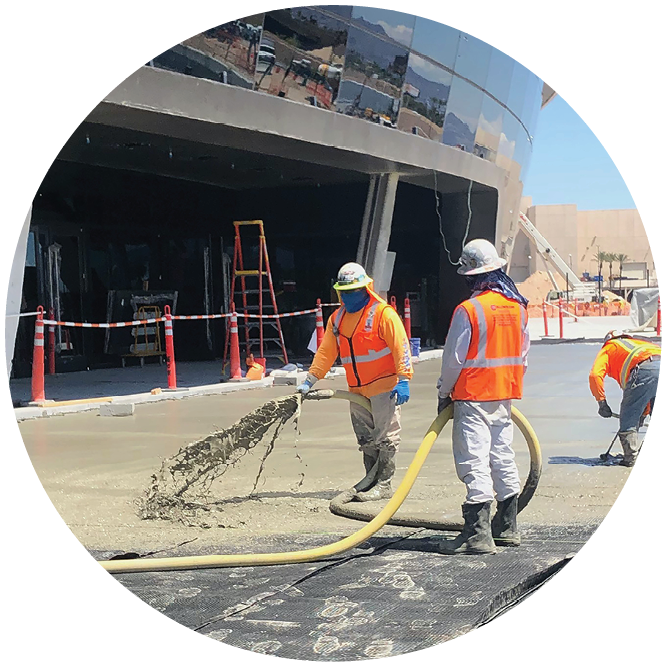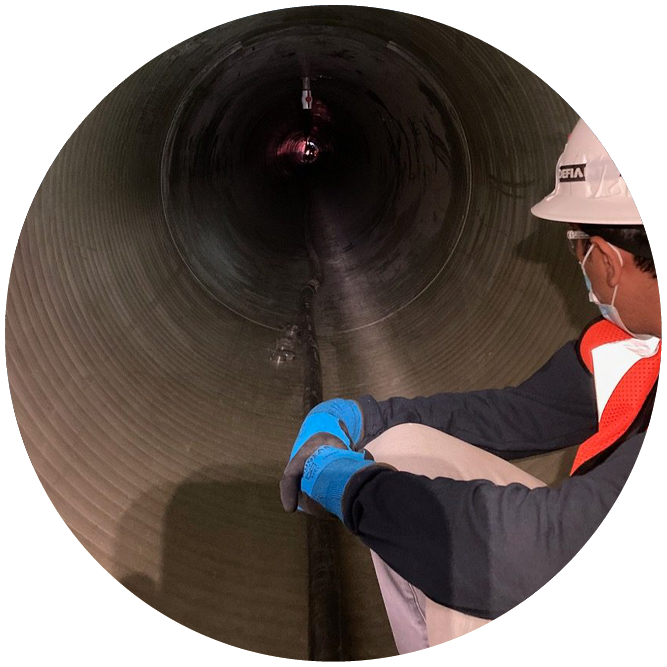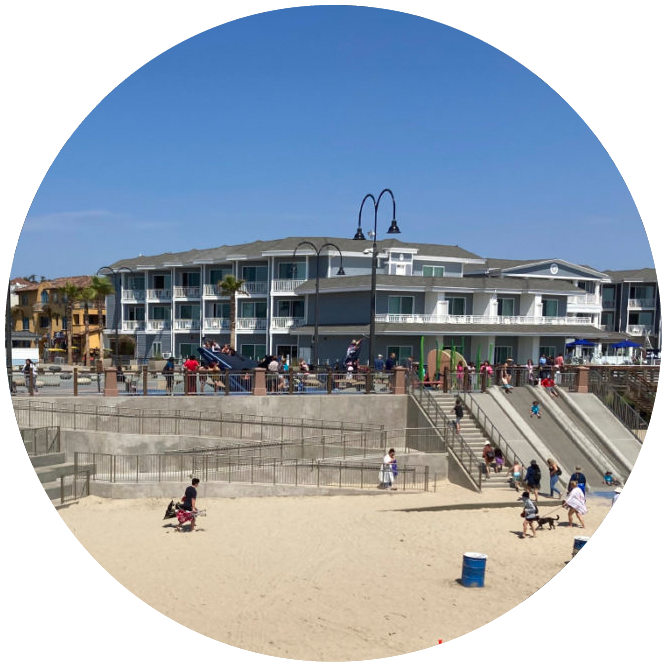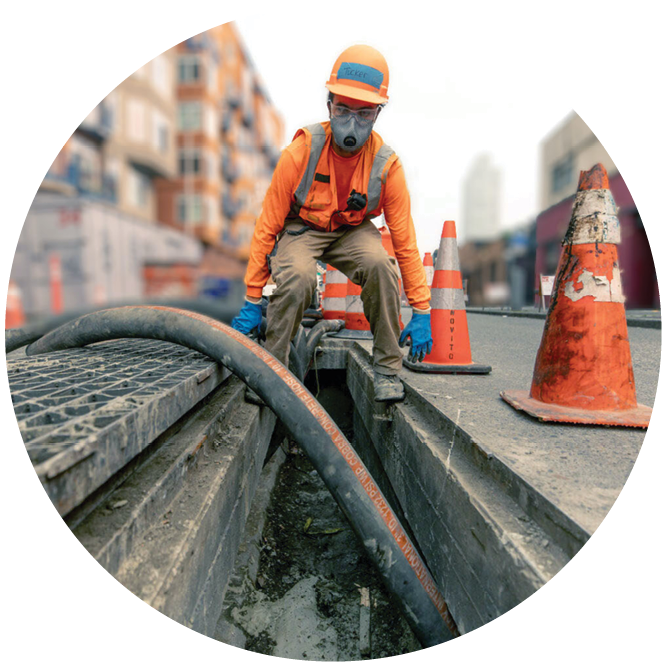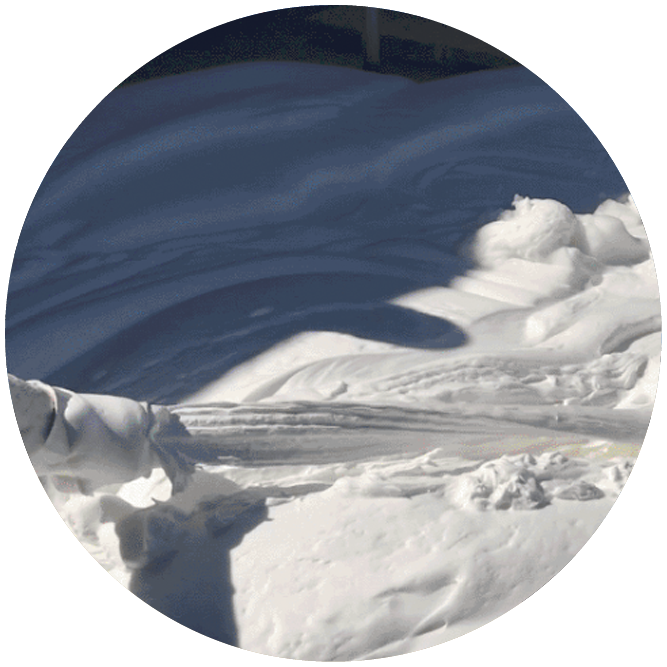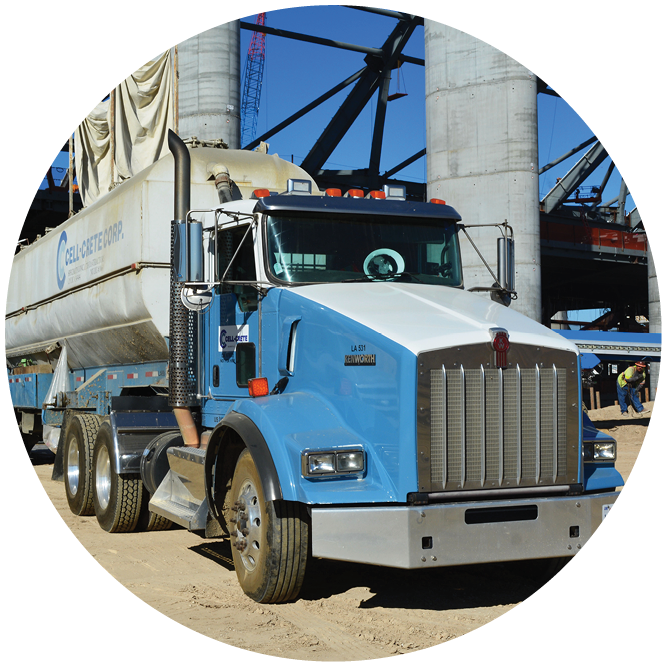Lightweight Cellular Concrete
Lightweight concrete has been implemented in construction for over 3,000 years, with the use of volcanic ash such as fine aggregate. Advances in technology and new materials have led to advancements in strength, durability, placement capacity, and consistency. Today, Lightweight Cellular Concrete (LCC) is being used as the lightweight backfill and flowable fill material of choice. Its low density reduces earth pressure, minimizes dynamic forces, mitigates settlement, and absorbs earthquake forces in subsurface structures. In addition to lower cost to traditional ground improvement alternatives, the cellular concrete fill option has the benefits of significant savings in time, less uncertainty of the total settlements and rates of settlements, disposal of groundwater and spoil, and ease of construction. In a modern construction environment, schedules get shorter, site footprints get smaller, and access is nearly impossible in some situations. It is imperative to provide a flowable fill option that is reliable and dynamic enough for each unique problem condition.
HOW IT’S MADE
Lightweight Cellular Concrete (LCC) contains type (I) II‐V Portland cement, water, and a preformed foam. The foam looks like shaving cream and is varied in quantity to control the unit weight of the cellular concrete. These air voids are established in the material via the introduction of either a protein-based or synthetic-based foaming agent that reacts mechanically and chemically with the other components to entrap the air and can produce cast density as low as 24 PCF (pounds per cubic foot).
| Cellular Concrete Class | Maximum Cast Density PCF | Minimum Compressive Strength at 28 days * PSI |
| II | 25-30 | 40 |
| III | 30-36 | 80 |
| IV | 36-42 | 120 |
| V | 42-50 | 160 |
| VI | 50-80 | 300 |
HOW IT WORKS
The production of cellular concrete takes place at the job site where bulk cement is trucked to site and batched on a truck-mounted plant to produce neat slurry and is injected with preformed foam to produce cellular concrete. Our portable batch plants can produce upwards of 2000 CY/day per unit, and multiple plants can be mobilized. Poured-in-place cellular concrete can be pumped substantial distances. In confined high-traffic areas, trucking traffic from traditional backfill material is substantially eliminated. One bulk cement delivery provides up to 120 CY of cellular concrete—compared to taking 10+ trucks of traditional backfill to equal the same volume. Transported by pumping, cellular concrete does not require compaction, and field QC tests are performed to verify density and strength (test cylinders).
Case Study Reference Links:
- Dynamic Properties of Lightweight Cellular Concrete for Geotechnical Applications
- Mechanical Properties of Lightweight Cellular Concrete for Geotechnical Applications
Lightweight cellular concrete (LCC) materials have been used in various civil engineering applications for several decades. In this study, the dynamic behavior of LCC materials was evaluated for possible geotechnical applications, such as mechanically stabilized earth (MSE) retaining walls… Read More >
Lightweight cellular concrete provides many advantages in geotechnical applications, however, its use has been limited because of a lack of understanding of its engineering properties. In this study, laboratory soil tests were conducted on lightweight cellular concrete having four different densities, and shear strength parameters, coefficients of permeability, and at-rest earth pressure coefficients were measured… Read More >
Cellular Concrete Benefits
✓ Lower cost option for ground improvement
✓ Reduced dynamic loading during seismic event
✓ Self-compacting properties
✓ Accelerated project schedules
✓ High bearing capacities
✓ Mitigates settlement
✓ Reduced dead load
Cellular Concrete Geotechnical Applications
✓ Retaining wall backfill
✓ Utility trench backfill
✓ Bridge abutment fill
✓ Landslip repair fill
✓ Annular grouting
✓ Flowable fill
✓ Void filling
State of the Practice for the Use of Lightweight Cellular Concrete (LCC) Materials in Geotechnical Applications
For more information, the following report demonstrates the extensive and successful use of LCC in engineering applications for over 60 years.
SEE OUR WORK
SOFI STADIUM
Due to the many benefits and versatility LCC offers, we placed cellular concrete for different applications on this job…
OYSTER POINT
Improvements at Oyster Point include raising the site with Lightweight Cellular Concrete for future sea level rise…
COLTON CROSSING
LCC assisted with the overburden pressure and reduced the impact on design in an area known for high seismic activity…
FIND YOUR REPRESENTATIVE
CONTACT US!
Learn how cellular concrete can help you reach your project goals!

